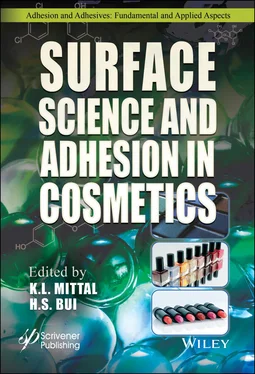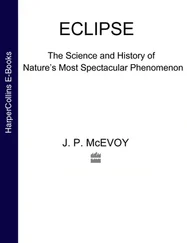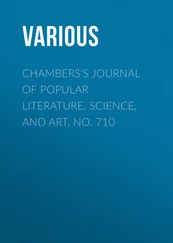1 ...8 9 10 12 13 14 ...33 Table 1.1 Structure and nomenclature of human stratum corneum ceramides [33].
| Fatty acid Sphingoid |
Non-hydroxy fatty acid [N]  |
α-hydroxy fatty acid [A]  |
Esterified ω-hydroxy fatty acid [EO]  |
Dihydrosphingosine [DS]  |
CER [NDS] |
CER [ADS] |
CER [EODS] |
Sphingosine [S]  |
CER [NS] |
CER [AS] |
CER [EOS] |
6-Hydroxysphingosine [H]  |
CER [NH] |
CER [AH] |
CER [EOH] |
Phytosphingosine [P]  |
CER [NP] |
CER [AP] |
CER [EOP] |
There are 4 main classes of sphingoid bases: Dihydrosphingosine (DS), sphingosine (S), 6-hydroxy sphingosine (H) and phytosphingosine (P) [33, 34]. In terms of the fatty acid moieties, there are 3 general classes: non-hydroxy fatty acid (N), α-hydroxy fatty acid (A) and esterified ω-hydroxy fatty acid (EO) [33]. These fatty acid moieties and sphingoid bases combine to make up the different ceramide classifications such as CER [NP], CER [EOS] and CER [NS].
To illustrate the body regional difference and seasonal impact on the ceramide profile, Ishikawa et al . conducted a one-year study on ten Japanese subjects with normal skin. In this study, their research team measured TEWL and capacitance, as well as taking stratum corneum samples to quantify the different ceramide groups from 10 different locations of the body [33]. Their findings suggested that lips, palm and fingers have least amounts of measurable total ceramides, while forehead, lower legs, upper arms, and buttocks have the most [33]. Lips, along with the palm, fingers, and cheeks showed lower ratio of CER[NP], CER[EOS], CER[EOH] and CER[EOP] and a higher ratio of CER[NS] and CER[AS] [33]. Furthermore, amongst all body locations, lips were found to have the lowest carbon numbers in CER[NS] and the highest level in C34-CER[NS] [33]. These findings are very interesting, as ceramides with a shorter free fatty acid chain length and an increase in C34 ceramide and unsaturated fatty acids have been identified in the stratum corneum of atopic dermatitis patients [38, 39]. Similarly to the findings by Kobayashi et al ., Ishikawa et al . also found lips as one of the anatomic regions with the highest TEWL values while having relatively average capacitance values [32, 33]. When examining the correlation between TEWL and the ceramides from different body locations, Ishikawa et al . observed an inverse relationship between TEWL and CER[NS], CER[NP] and CER[NDS] [33]. Conversely, a positive relationship between TEWL and CER[AS] was found [33]. Interestingly, seasonal variations have very little impact on the TEWL, total ceramide and CER composition on the lips; however, an increase in capacitance value was shown in the summer from the spring [33]. This work was followed by another publication in 2016, which studied the relationship between lip roughness and ceramide profile in an attempt to clarify the biological contributing factors to lip chapping ( Figure 1.5) [40]. In the work conducted by Tamura et al ., CER content, TEWL, and capacitance were measured from forty-one Japanese subjects with different classifications of lip roughness [40]. In their work, an inverse correlation between lip roughness and capacitance was found, while TEWL showed no significant trend between the different lip roughness scores [40]. Lip roughness also correlated negatively, albeit with relatively low correlation coefficients, with the level and average carbon number of CER[NH] and CER[NP] [40]. Hikima et al . investigated the lip surface corneocytes and desquamation regulating proteinase of normal and chapped lips and found that reduced levels of cathepsin D activity tended to be a factor for chapped lips [41]. In this work, apricot extracts were applied topically to chapped lips, resulting in a decerease in lip roughness accompanied by an increase of cathepsin D activity [41]. The effect of season was investigated by Gubanova and Caisey where they followed the lip surface properties of 20 women in Moscow between April and September [16]. In the study, lip surface properties were evaluated by examining four key criteria: dryness, cracking, scaling, and pleating. Not surprisingly, dryness, cracking and scaling were found to be more significant in April and May compared to July and August, while pleating was less visible in July than in September [16]. In a separate study, Gubanova and Caisey investigated the effects of lip balm application using the same criteria for a four-week study during December in Irkutsk [16]. The application of lip balm showed significant improvement in the drying, scaling, and pleating scores of the lips over the four-week period [16].

Figure 1.5 Lip roughness score [40].
Thus far, this book chapter has provided an overview of the lip anatomy and the surface properties of lip skin. Similarly to the skin, with age there are dynamic changes that can occur to the lips as part of the multifactorial aging process of the face. The topic of face aging is well documented [42–49] and is not the focus of this book chapter; however, it is important to understand the process of lip aging in the context of facial aging. Around the nasolabial and labiomental crease areas, aging subjects experience subcutaneous fat atrophy, changes in bone support in the pyriform area, significant loss of collagen and elastin fibers, and changes to the platysma and orbicularis oris muscle [16, 46, 49, 50]. These changes in the tissue structure contribute significantly to the development of bitterness fold (lines from the corner of the mouth down to the chin), sagging jowls, shriveled skin, and double chin around the chin and neck areas [49]. Changes to the lip volume and thickness have been elucidated by a number of research teams, but most impressively by Ramaut et al . where they conducted magnetic resonance imaging on the upper lips of 200 Caucasian subjects [51]. In their study, they segregated the population by gender (100 men and 100 women) and by age (20-30 and 65-80 years old) and evaluated for lip length, lip thickness, nasolabial tissue thickness and volume [51]. The older population reported to have significantly greater lip length, thinner lip thickness and lesser lip volume [51]. As for the comparison between genders, the female population had thinner lips and lesser lip volume compared to the males amongst the younger population; however, this difference was not as obvious in the older population [51]. Injection of hyaluronic acid based dermal fillers, botulinum toxin, fractional laser resurfacing and autologous fat transfer are amongst the most popular methods to reverse the signs of aging [52, 53]. However, these dermatological procedures still pose varying health risk to aging consumers. This opens an important opportunity for the cosmetics industry to offer an alternative solution to aging consumers or consumers seeking lip plumping innovations.
Читать дальше




















